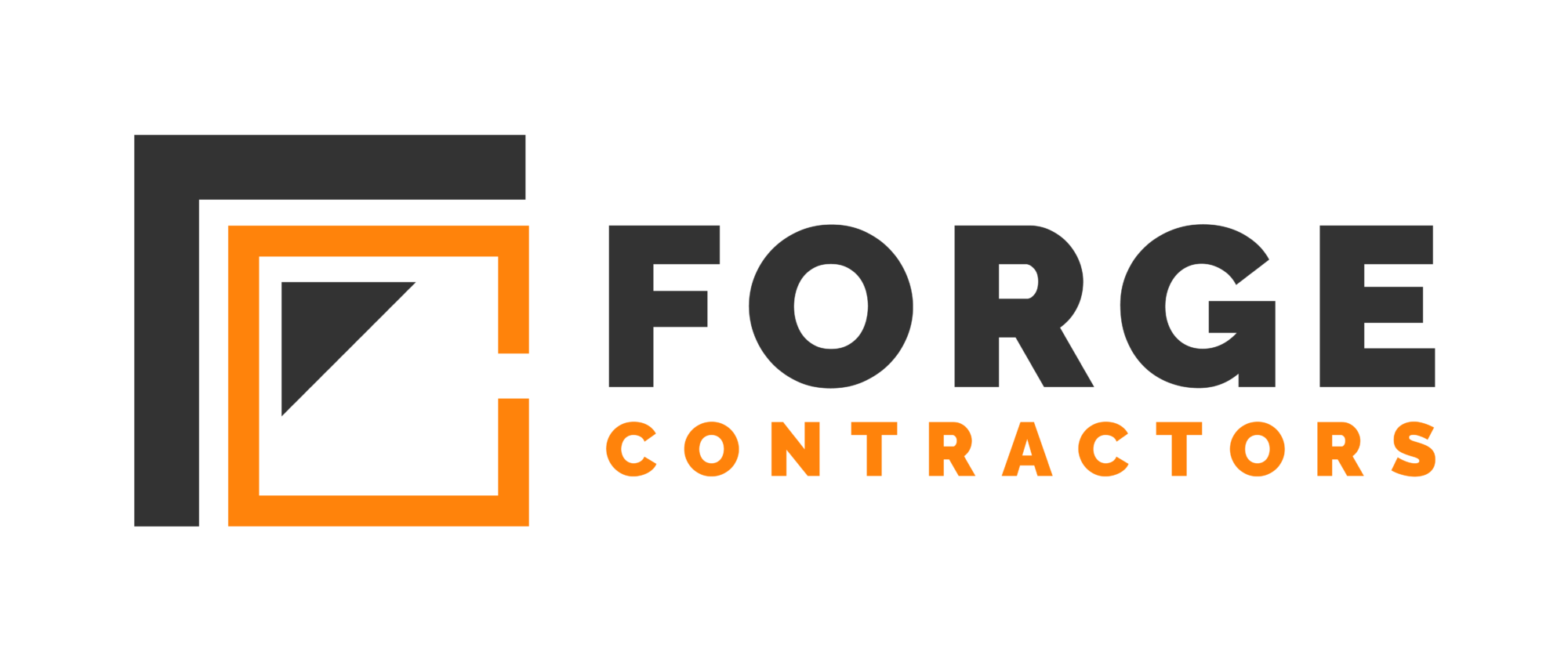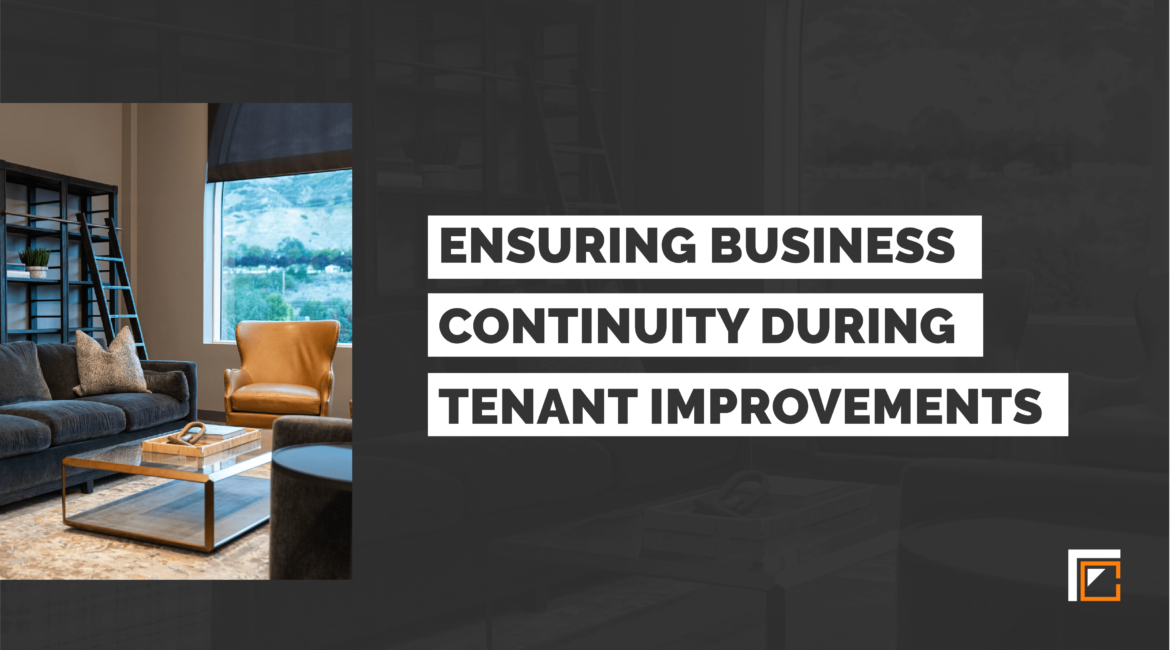Renovating and improving an existing commercial tenant space is a cost-effective strategy to increase property value, optimize operational efficiency, and enhance employee wellbeing. Forge Contractors, who specializes in Utah light commercial tenant improvement (TI) projects, understands the importance of maintaining uninterrupted business continuity for owners, tenants, and employees.
Preconstruction Planning: The Foundation of Light Commercial Renovations
When it comes to a TI project, communication and planning is key. Lead Estimator, Tony Ramos, explains it begins in preconstruction with vetting the design and creating an accurate estimate to ensure construction stays within budget. Identifying and ordering long-lead items aids in developing a realistic construction schedule.
Effective Communication: Key to Operational Efficiency
Forge’s approach to Utah light commercial tenant improvements involves close collaboration with tenants and design teams. “During preconstruction, we identify the tenant’s needs and assess how construction might impact their operations,” Tony shares. This early communication allows the team to develop effective mitigation plans to ensure that normal business operations can coexist with construction.
Light Commercial Tenant Improvements: Phasing and Scheduling for Success
Collaborating closely, we develop a detailed phasing plan that aligns with operations and meets owner turnover requirements. The project schedule establishes durations and turnover dates that Forge tracks and monitors through the TI process. This level of planning and scheduling is key to limiting risks to business operations and sets a clear expectation with subcontractors and owners.
Maintaining Safety and Minimizing Disruption in Utah Tenant Improvements
As construction begins, a savvy and seasoned project manager/superintendent team is critical to managing the quick flow of information and ensuring trade partners clearly understand the scope of work and can capably execute it. Recognizing the risks of working around tenants during a project, Forge project teams pay special attention to workplace safety and compliance. “Before commencing their work, each trade attends a safety orientation conducted by the project superintendent to understand project safety requirements and how to protect the property,” explains Conley Hubert, Operations Manager-Light Commercial. “The superintendent also conducts weekly safety inspections to ensure that all trades are in compliance.”
We are highly sensitive to noise and disruption concerns and implement strategies to assess and mitigate potential construction impacts. This may involve installing barriers to contain noise, dust, and debris, installing special filters on HVAC equipment to reduce dust and smells, and regularly cleaning the work area to minimize impacts to tenants and their customers. Splitting construction activities into multiple areas and phasing the work often provides a tenant some flexibility in shifting from their old space into their new space. Another way to minimize the impacts of construction activities is to work nights, weekends, or even holidays. Our team will review all the options with the owner to determine the best way to minimize disruptions in the most cost-effective way possible. We clearly communicate the benefits along with potential impacts to ensure construction is smooth and unobtrusive.
Case Study: McCullough Law in Provo, Utah
These strategies were met with success while working at McCullough Law in Provo, Utah. The client continued to work daily in their existing office while Forge renovated three quarters of the remaining floor. Our project team isolated the work area with temporary barriers that incorporated a clean, finished look to maintain a professional appearance for the tenants and their clients. Instead of performing a large amount of demolition during normal business hours, subcontractors worked nights and weekends to avoid loud disruptions to workday activities.

Using Technology to Enhance Business Continuity
Conley believes effective communication with project stakeholders is crucial to keep the project flowing smoothly. “We use an online management system to share information between the project team. Information, including schedule, budget, deficiencies, inspections, etc. is instantaneously shared and easily accessible. This enhances the overall business continuity of the project team.” When an unexpected challenge arises that may threaten business operations, clients can lean heavily on Forge’s partnering approach to work through the issue. “By swiftly identifying solutions and offering resolution to the owner, we avoid potential impacts to the budget and schedule,” explains Conley.
Evaluating Post-Improvement Business Performance
While the success of a completed TI project can be measured by hitting the schedule and staying within budget, maintaining business continuity is gauged by minimizing downtime for the business, ensuring smooth daily operations, and evaluating overall client satisfaction. “Whether it’s increased productivity, revenue growth, or improved customer satisfaction, evaluating post-improvement business performance helps us understand the impact of our efforts on tenant operations,” Tony shares.
Forge Contractors: Your Partner for Utah Light Commercial Tenant Improvements
Finding the right company to perform the improvements to advance your business can be a challenge. That’s why it’s a good idea to engage Forge Contractors who can perform complex retrofits, renovations, and additions while you seamlessly continue to run your business.
We invite you to reach out to learn more about our tenant improvements in Utah. Email us at contactus@forgebuild.com or call us at (801) 386-8222.





